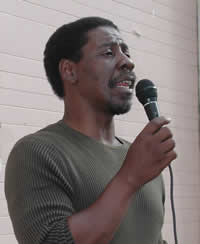 |
 |
 Finding common ground on values is the key to firing people up about policy.
Finding common ground on values is the key to firing people up about policy.We’re no message specialists, so for this section we went to the folks who are. SPIN Project, a nonprofit that works with grassroots organizations on their strategic communications, published a great guidebook in 2004 called Loud and Clear in an Election Year: Amplifying the Voices of Community Advocates. We’ve highlighted relevant bits in this section of the TechKit, but for those looking to learn more, the book is a rich resource.
Message experts talk a lot about framing. The principle begins with the basic component of verbal communication, words. Each evokes in the mind of the listener a frame. George Lakoff, one of the leading experts on political framing and author of an article published in that Loud and Clear (among many other works), defines a frame as “a conceptual structure used in thinking.”
While frames are sturdy structures they are far from permanent; as a person’s perceptions of the world and certain words shift, their frames will as well. Strengthening a frame requires reinforcement: connecting the word to the frame repeatedly and over time, either by reiterating or negating the frame (as Lankoff points out, “the suggestion not to think of an elephant invokes the elephant”).
A successful frame must ring true with the experience and the values of its audience. The broader the frame, the more people who will respond to it. In their fight against a street bond ballot initiative that sought to build a road through a sacred site outside of Albuquerque, SAGE Council and its allies decided that to frame their cause in terms of preservation and respect for the land and previous generations would not turn out the necessary number of votes. So they went the other route: they pointed out that the street bond would eat up a disproportionate chunk of public funds, and called themselves the “Stop Tax Waste” campaign, as Bineshi Albert recalls in the video.
Conservatives have been especially adept at tapping into wideheld anxieties about taxation. “Tax relief,” a frame coined by the Bush Administration, triggers a certain reaction because it evokes the concept that taxes are a burden. Connected to this frame is another that is tightly bound up in the myth of the American dream: that the wealthy earned every penny, “the hard way.” As Lakoff points out, the only way to reframe the “tax relief” debate is to expose the truth: the infrastructure of wealth accumulation behind every rich American. “Paying their fair share” and “those who have received more” are phrases that, Lakoff suggests, reframe the concepts in support of progressive taxation.
Reframing requires more than a new set of sound bites; it “requires a rewiring of the brain,” Lakoff says. The good news is that community organizers are in the best position to start that rewiring, from the grassroots on up. As Wellstone Action points out, progressives have “a strong set of core values – equality of opportunity, freedom, prosperity for all citizens, fairness, social and economic justice.” Your constituents share these values. If you frame the issues in these terms the message will be authentic and powerful, and it’ll ring true across communities.
Finding common ground on values is the key to firing people up about policy. Lakoff posits that there are five “building blocks” of values-based policy-making: